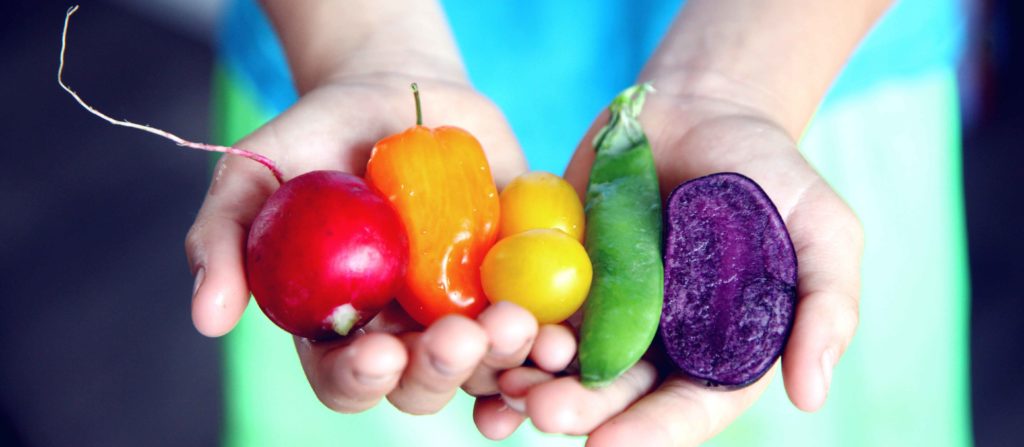
How to go from “yuck” to “yummm.”
The struggle is real.
Are you like most parents (and by most we mean nearly all) battling to get your child to eat those nutritious veggies each day? Or at the very least take a few bites? Sure, there’s the age old “you can’t have dessert until you finish your broccoli… ” bribe. And sure, a bribe may work to some degree, but what if you actually want your child to actually enjoy nutritious foods?
Why the big deal?
Encouraging healthy eating habits early in life has been a proven way to prevent the onset of diet-related diseases.1 Also, exposure to fruits and vegetables in infancy and toddlerhood have been associated with acceptance of these foods as they grow older.2
At BootCampSF, we’ve been researching ways to help parents build their child’s love for veggies, and here are some ideas for you:
1. Believe in butter
Babies are born with a preference for sweet and salty taste.3 This predisposition means sweet and salty foods are much more likely to being accepted by infants compared to bitter flavored foods — such as certain vegetables. So what does this mean for you? You will be more successful in the long run if you disguise rather than bribe.
To help your kid get passed his sensitivity to bitter foods, consider masking that bitterness with butter. Yes, we said “butter,” and more specifically the grass-fed variety which contains vitamins A, E, and D3. These vitamins are important to a growing child, plus the added fat helps their bodies absorb them.4 Try adding 1 tablespoon of butter per half cup of broccoli, green beans, mashed sweet potatoes, etc.
2. Go fresh food shopping together
Teach healthy eating choices by letting your kid help you select the fresh produce. Try making a game out of selecting different colors of fruits and vegetables. Also, a visit to your local farmers’ market can be lots of fun. Not only will you be teaching your child how to select high quality produce, you’ll be more successful come dinnertime when serving the foods you discovered together.
3. Let him be your sous chef
Even younger children can help in the kitchen. Of course, we don’t mean chopping vegetables, but instead let them try simple tasks like tearing the lettuce for a salad, stirring the pot, or measuring ingredients. As with the food shopping, you’re creating a sense of ownership with their food which is a proven technique for encouraging healthy eating.5
4. Grow your own
Research shows children have a more positive attitudes toward vegetables after gardening.6 This should come as no surprise since freshly picked vegetables are so much tastier than those sitting on the grocery store shelves. If you don’t have the means for your own garden, then take a visit to a vegetable farm where your child can pick her own. Growing or picking your own foods ties back into the sense of ownership discussed above.

5. The secret is in the smoothie
Pureeing vegetables is possibly the easiest way to getting kids to consume more fresh foods. A study in the American Journal of Clinical Nutrition reported that children ages three to five nearly doubled their consumption of vegetables on days when they were served pureed vegetables instead of whole.7 An ideas for creating a nutrient dense smoothie includes blending: half a cup of spinach, half an avocado, half of a small banana, ¼ cup canned pumpkin, and ½ cup of either almond milk or water.8
6. Create a copycat
Invite a friend over for dinner who you know has healthy eating habits, or send your kid to the older cousin’s house who loves his spinach. The peer pressure of watching the other kids devour their vegetables might provoke yours to give them a taste at the very least.
7. Set a Good Example
No doubt, you already know this one. Yet, knowing what you should do doesn’t always mean it’s easy to do it. For example, you may love Diet Coke. But if you’ve banned drinking sodas for your child, it may be confusing for him to watch you guzzle that Diet Coke during dinner. Also, what is your own relationship with food? Are you trying healthy recipes or complaining about your weight after eating junk food? Bottom line: if you are willing to try new healthy food choices, your kid will be more likely to as well.
In Conclusion
Don’t be afraid to experiment and try creative ways to encourage your child to eat healthily. Though at times it might be frustrating, trying new ways to prepare vegetables and being positive are vital to getting your child to enjoy them… for a lifetime.
1) https://www.ncbi.nlm.nih.gov/pubmed/21651929
2) https://www.ncbi.nlm.nih.gov/pmc/articles/PMC2678872/#R35
3) https://www.ncbi.nlm.nih.gov/pmc/articles/PMC2678872/#R27
4) https://www.verywellfamily.com/
5) https://www.eatthis.com/
6) http://gardening.cals.cornell.edu/program-tools/benefits-and-research/key-findings/
7) https://www.sciencedaily.com/
8) https://eatthisnotthat.com

